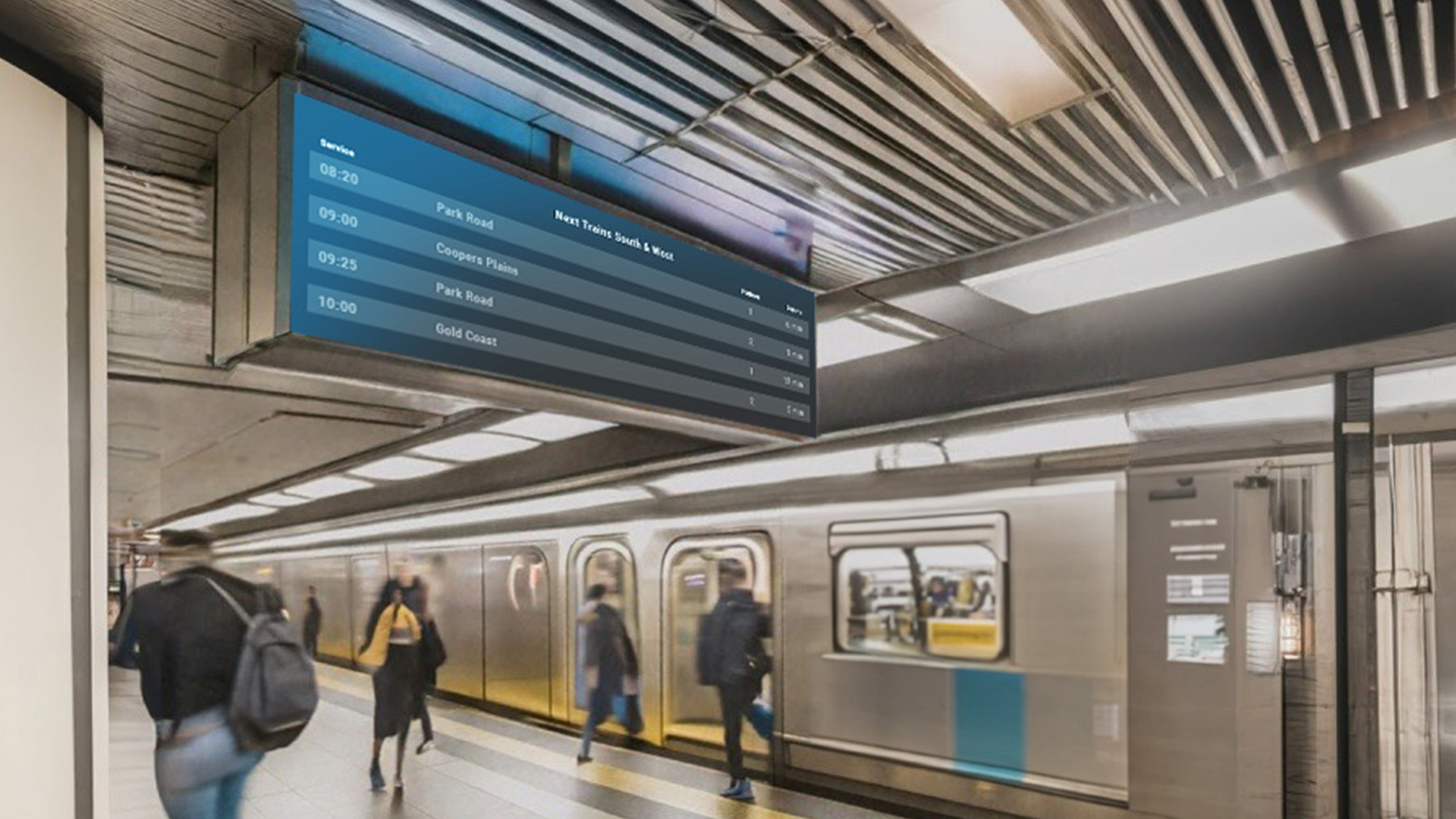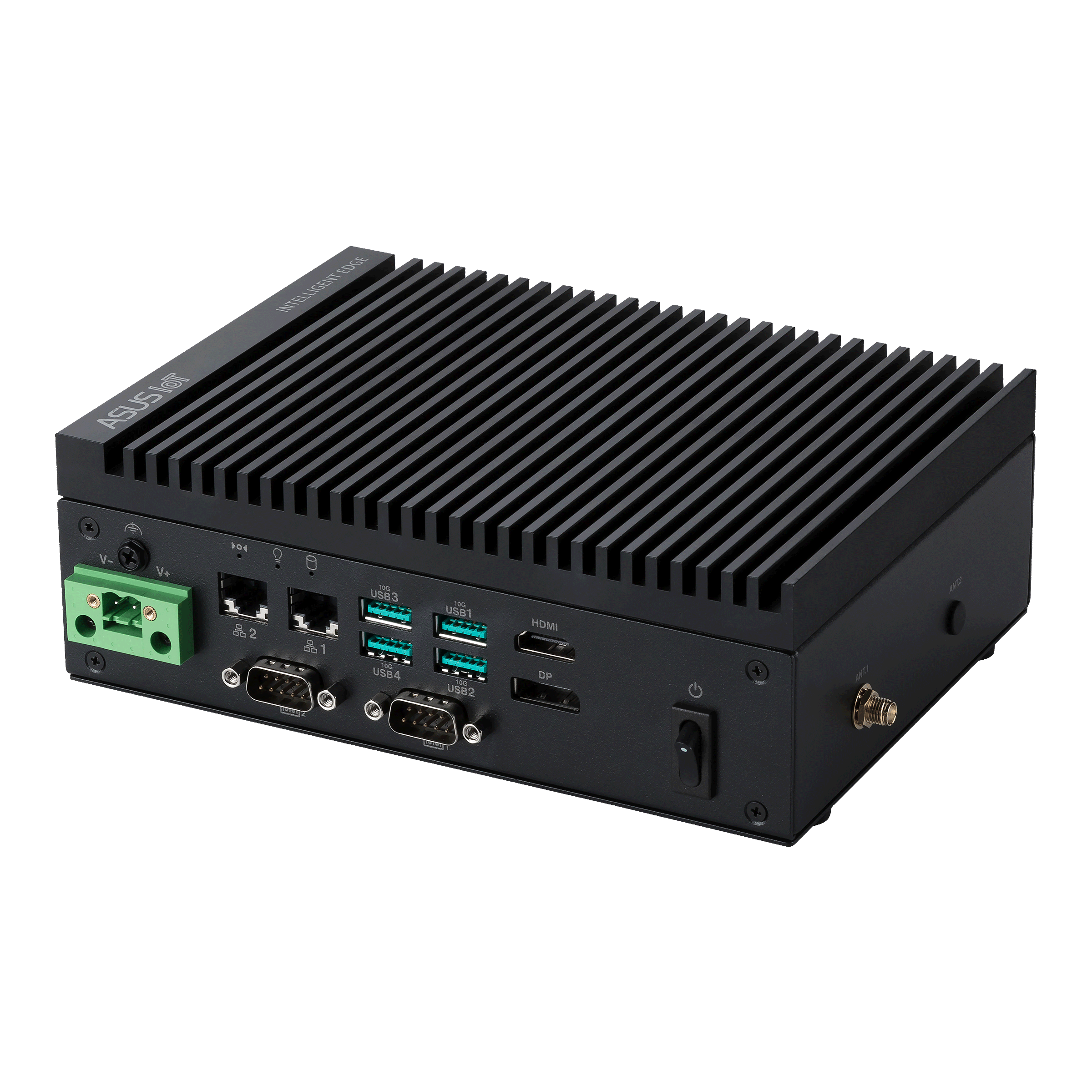
Embedded Computers Can Enhance Digital Signage at Rail Stations

Digital signage refers to the use of digital displays, such as LCDs, LEDs, or projection units, to broadcast multimedia content in public or private spaces. Its history traces back about 25 or 30 years, when digital technology began to replace traditional static signs like posters, billboards, and bulletin boards.
Digital signage created a paradigm shift by enabling real-time content changes, greater interactivity, and the ability to display multimedia elements such as videos, animations, and live feeds. These capabilities allowed businesses to target their messages more effectively and quickly adapt to changing needs or promotions.
The rise of the Internet, more affordable hardware, and software solutions made digital signage possible and widespread today. Key features include Cloud-based management, remote control, scheduling, and integration with other systems like social media or data analytics. Touchscreens and sensors also allow for increased interactivity, providing a more engaging experience for users.
As businesses sought more dynamic ways to communicate with customers, digital signage became a popular tool across sectors like retail, hospitality, healthcare, and transportation. Its flexibility and ability to deliver targeted, real-time content made it a preferred solution over traditional signage.
Enhanced Passenger Experience
When looking at rail stations, digital signage can enhance the passenger experience by providing real-time information as well as advertising opportunities, potentially serving as a revenue source. In a rail station, the benefits of digital signage include improved communication, increased operational efficiency, and enhanced passenger satisfaction. Signage can display train schedules, delays, platform information, emergency alerts, and local news. This ensures that passengers are well-informed, reducing confusion and streamlining station traffic flow.
Accurate schedules and live updates on delays or platform changes can be displayed in real time, reducing anxiety and improving satisfaction. From a safety perspective, the signs can instantly broadcast emergency messages or important instructions if disruptions occur.
The Right Hardware For the Job
From a hardware perspective, what’s needed are high-brightness, weatherproof displays to ensure visibility, even in sunlight or other outdoor areas. They are often attached to media players that handle content processing and ensure smooth graphics display, often integrating with the station’s control systems for live updates. This media player is likely part of the embedded computing platform that serves as the brains of the digital signage operation. Reliable fiber-optic, LAN, and Internet connectivity are essential for real-time content updates, remote management, and integration with other systems, including emergency and alert systems.
Keep in mind that rail stations can be demanding environments, with high foot traffic, temperature changes, dust, and potential vandalism. The hardware needs to be rugged enough to withstand these conditions. Hardware reliability is critical to avoid disruptions in communication, ensuring that stations run as efficiently as possible.
Less Power Reduces Costs
Rail stations often have dozens of digital displays, which can contribute to high energy costs. Therefore, low-power solutions are essential to reduce operational costs, particularly as so many institutions are trying to align with green initiatives. Energy-efficient embedded computing platforms and automated systems that adjust brightness based on ambient light can help minimize energy consumption. Furthermore, reliable low-power devices extend hardware longevity, ensuring the system can operate consistently without frequent, potentially costly, maintenance.
Longevity in rail-station digital signage is essential to ensure consistent performance in high-traffic environments and reduce long-term costs. The ability to upgrade hardware and software after deployment allows the system to adapt to evolving technology, accommodate new features, and maintain compatibility with updated communication systems. This flexibility extends the system's lifespan, reduces downtime, and ensures that the station can continue providing up-to-date information efficiently without frequent costly replacements.
Maintaining Secure Systems
Security is paramount in rail-station digital signage because these systems provide real-time information that directly affects passenger safety and station operations. Unauthorized access could lead to misinformation, causing confusion, safety risks, or even panic. In addition, digital signage systems are often connected to broader network infrastructures, making them potential targets for cyberattacks. Ensuring robust security protocols, such as encryption and access controls, protects against hacking, data breaches, and system tampering, safeguarding both operational integrity and public safety.
The EBS-S100 For Railway Digital Signage

One embedded computing platform that’s well-suited for railway digital signage is the ASUS IoT EBS-S100, due to its robust performance, reliability, and features designed specifically for industrial use. The system has already been successfully deployed in a major rail station project in Southeast Asia, as the heart of the station’s passenger information system (PIS). The EBS-S100 offers several key advantages for this application.
For example, its fanless architecture enhances durability by reducing mechanical parts prone to failure. This design is ideal for dusty, high-traffic environments like rail stations. Its rugged construction ensures reliable performance in extreme temperatures, humidity, and vibration—common conditions in railway stations. And its compact size allows for easy integration into digital signage systems without consuming excessive space.
As stated, efficiency is critical for reducing operational costs, especially when multiple units are deployed. The EBS-S100’s low-power design ensures that it can run continuously without contributing significantly to energy expenses. It is based on a low-power Intel Atom® processor, with a typical thermal design power (TDP) of around 12 W. The total power consumption for the platform, including memory and other components should be below 40 W. Other features include support for up to 16 Gbytes of 4.8-GHz DDR5 memory, USB and audio ports, dual 10/100/1000-Mbit/s Ethernet LAN, and a hist of COM ports.
AI/ML Assist
A platform like the EBS-S100 can perform predictive analytics using artificial intelligence (AI) and machine learning (ML). Essentially, it would analyze historical and real-time data to predict train delays or disruptions, allowing the system to update passengers proactively. It could also analyze passenger flow and behavior to provide personalized information, such as suggesting less crowded routes or platforms. And AI can optimize the content that is displayed on the signage based on the time of day, passenger demographics, or current events, improving the relevance and effectiveness of the information.
From a connectivity perspective, it supports a variety of I/O interfaces like HDMI, DisplayPort, and Ethernet, making it compatible with a wide range of display types and network configurations. This versatility is crucial for integrating signage with existing systems, such as train schedule databases or central control platforms.
At the same time, the EBS-S100 offers flexibility in terms of upgrading both hardware and software, allowing it to keep up with new signage technologies, security protocols, and future system expansions. By choosing a modular hardware platform like the EBS-S100, developers can easily upgrade components as technology advances without having to replace an entire system.
There are a host of advantages that are realized when engaging with ASUS IoT. For example, you’re working with an experienced design team that offers global operations and robust customer support, including pre-sales consultation, deployment assistance, and post-sales service. The company’s wide product family makes upgrades and expansions simple. In addition, it can offer software development kits (SDKs) and APIs that allow developers to fully utilize the hardware’s capabilities, such as AI processing or Edge computing. For more information, contact the company today.
